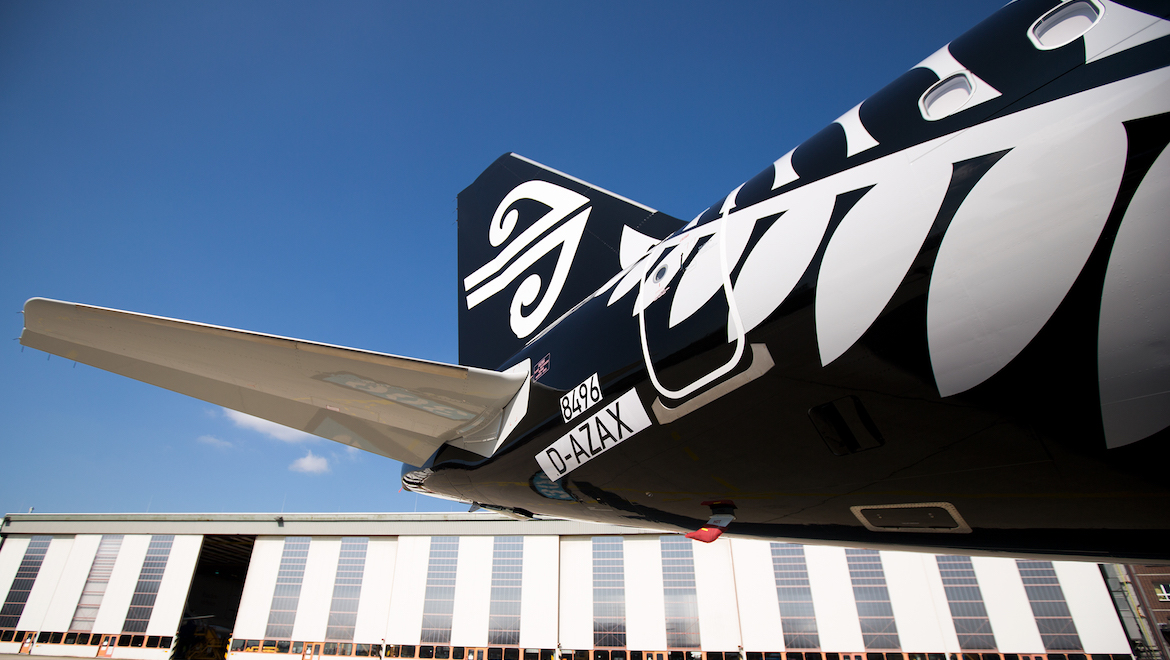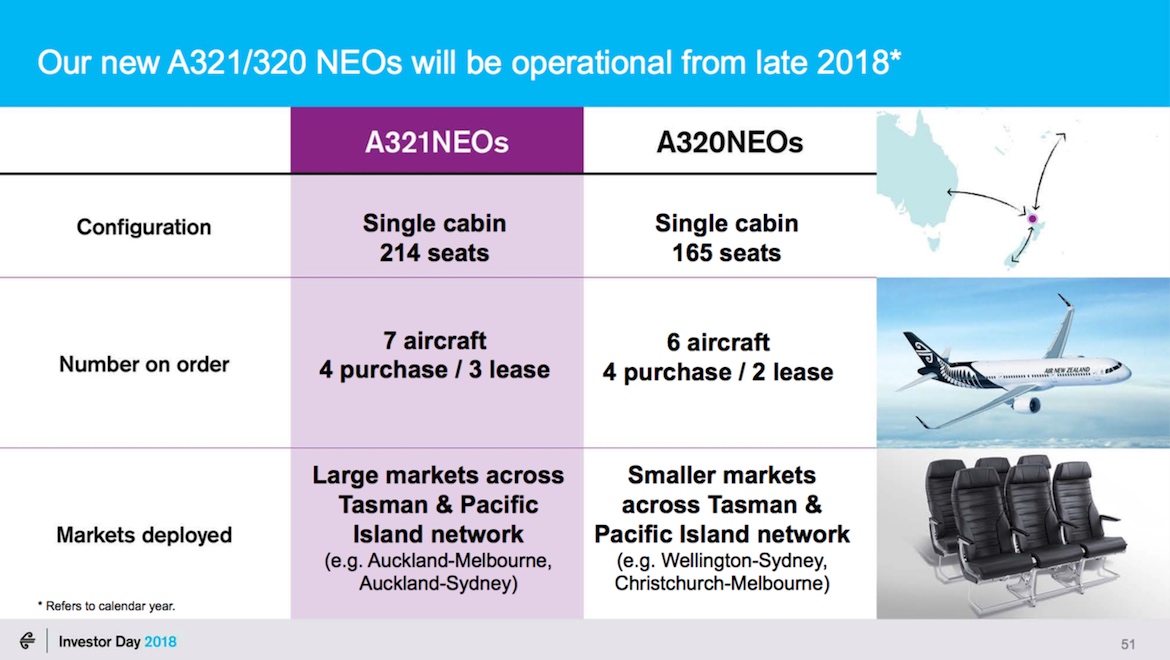
Air New Zealand’s first Airbus A321neo is due to land in Auckland tonight after having taken formal delivery of the aircraft last Wednesday.
Registered ZK-NNA, the A321neo took off Airbus’s Hamburg, Germany facility on October 31 and it is due to arrive at Auckland Airport on Monday evening having ferried via Muscat in Oman, Kuala Lumpur in Malaysia and Cairns.
The first leg of the delivery of @FlyAirNZ’s first @Airbus #A321neo is nearly complete. ZK-NNA wears a special All Blacks livery.
Follow live at https://t.co/gB4IyIWUXB pic.twitter.com/zL0UBPpZv8
— Flightradar24 (@flightradar24) November 2, 2018
The all-black painted ZK-NNA is due to enter commercial service on November 23 when it will operate NZ739 from Auckland to Brisbane.
VIDEO: A look at final assembly of Air New Zealand’s first A321neo from the airline’s Youtube channel.
Air New Zealand has ordered seven A321neos and six A320neos to be deployed on its Australia and Pacific Islands network. The airline has chosen Pratt & Whitney PG1000G engines to power its A320neo and A321neo fleet.
They will replace current A320ceos, offering both better fuel efficiency and additional capacity, as well as an improved passenger experience through larger overhead storage bins, new inflight entertainment systems and inflight internet Wi-Fi.
The A321neos have been configured to seat 214 passengers in a single-class layout, an increase of 27 per cent, or 46 seats, from the 168-seat A320ceos.

Meanwhile, the Air New Zealand A320neos will have 165 seats.
The airline said its second A321neo is due to enter service “in the coming weeks”, while the “majority” of the remaining aircraft would be delivered “at intervals through until late 2019”.
The seats to be fitted on Air New Zealand’s A320neo/A321neo fleet were unveiled in April 2017.
The leather seats, from United Kingdom-based Acro Aircraft Seating and New Zealand-based Flight Interiors, features window and aisle seats one centimetre wider than those on its existing A320ceos, while the middle seats are three centimetres wider.

Air New Zealand also adding A321neos to domestic network
In addition to the seven A321neos and six A320neos for international flights, Air New Zealand in August announced it had signed a commitment for seven A321neos that will be deployed on its domestic network.
Currently, Air New Zealand has 17 A320ceos operating in its home market, where the airline has increased capacity by about 20 per cent since 2016 through increased aircraft utilisation.
The domestic fleet would be expanded to 20 aircraft in 2019, with the temporary transfer of A320ceos currently used on the trans-Tasman routes redeployed into the New Zealand market.
The fleet will stay at 20 aircraft from the time domestic-configured A321neos start arriving in 2020 and replace A320ceos on a one-for-one basis until all seven have been delivered in 2024.
Air New Zealand has said this would enable seat growth of about 25 per cent from 2018 to 2024.
These domestic A321neos are scheduled to be delivered between 2020 and 2024.

Air New Zealand to be third airline to fly A320neo family of aircraft to Australia
While Air New Zealand is the first airline in Oceania to have the A320neo family of aircraft, it will not be the first to operate the type to Australia.
In early July, Philippine Airlines became the first carrier to fly a A320neo family aircraft to Australia, when it commenced four times weekly non-stop flights between Manila and Brisbane with the A321neo. The A321neo replaced the A340-300 that PAL previously used to serve Brisbane.
Royal Brunei Airlines (RBA) followed with the A320neo in August, when it substituted the next generation narrowbody in place of the Boeing 787-8 for two Bandar Seri Begawan-Melbourne-Bandar Seri Begawan rotations.
The temporary equipment downgauge was due to engine inspection requirements for its Boeing 787 fleet.
VIDEO: Air New Zealand’s first Airbus A321neo being painted from the airline’s YouTube channel.

















craig
says:so if seats are wider, either the armrests are gone/reduced or aisle reduced in width or both? Which is it ?
Chris
says:Craig – Apparently the arm rests are thinner. The aisle width is still the same.
craig
says:so if only the arm rests are thinner, the seats must be the same width ? Sounds like Kiwi spin.